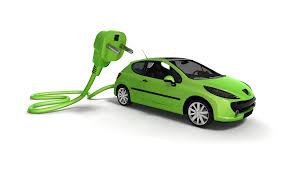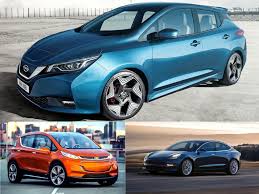Why is little Norway leading the world in the use of electric vehicles?
 Almost 60% of new cars sold in Norway in March 2019 were fully electric. Record statistics regarding Norway and electric vehicles show that the Scandinavian nation hopes to stop selling cars powered by fossil fuels by 2025.
Almost 60% of new cars sold in Norway in March 2019 were fully electric. Record statistics regarding Norway and electric vehicles show that the Scandinavian nation hopes to stop selling cars powered by fossil fuels by 2025.
Sales figures for electric vehicles may be even higher, but thousands of Norwegians find themselves in long waiting lists because dealerships do not have time to import enough electric vehicles. According to industry data, 11,518 electric vehicles were registered in Norway in the first quarter of 2019, which is twice as much as in the previous year. The new Tesla Model 3, Nissan Leaf, and Volkswagen e-Golf make up the majority of registrations.
Although sales in China and the US are significantly higher, Norway remains the indicator of the electric car revolution, as there are much more electric cars on the roads of this country than in other countries of the world. Constant news headlines over the past few years have caused many people to wonder why a small Scandinavian nation with a population of just over 5 million is leading the electric mobility revolution. The answer is simple: a favourable environment and financial incentives.
Financial incentives and charging infrastructure
Despite its reputation as a major player in the oil industry, almost all of Norway’s domestic electricity comes from hydropower. Since most of the electricity in the country is renewable, the transition to electric vehicles is much more environmentally friendly than in countries where electricity comes from coal-fired power plants with high levels of pollution. To make this happen, the Norwegian government has invested heavily in financial incentives and charging infrastructure.
Back in 1990, the government began to introduce incentives for owners of electric vehicles. Road tax has been reduced, toll roads and public ferries have been charged, and some municipal car parks have offered free Parking.
The Norwegian sales tax of 25% was removed from new purchases of electric vehicles in 2001, and drivers were allowed to use bus lanes from 2005. Despite the fact that the extensive charging infrastructure in the country was launched at the expense of public money, private companies are now committed to the installation and maintenance of charging stations and points.
The government achieved its goal of 50,000 zero-emission vehicles on the road three years earlier than planned. Despite this, the current center-right coalition retained most of the incentives for electric vehicles until 2021.
Tax cuts for the rich?
Many Norwegians have received financial benefits. 34-year-old computer engineer from Trondheim Berge Schwebs Bjørlo (Berge Schwebs Bjørlo) bought in 2015 Tesla Model S with his partner, calling this solution easy. “We compared the total cost of ownership of a gasoline car with Tesla. With the high cost of fuel and the daily use of toll roads, owning a petrol car has proven to be significantly more expensive than monthly payments and the cost of electricity for an electric car.”
Some in Norway criticize the broad package of incentives as nothing more than tax cuts for the rich. Some even suggest that it’s just a discount on a second car for the rich, and so do nothing to get gasoline cars off the road.
Since the used car market in Norway is still dominated by petrol cars, those who cannot afford to spend money on a new electric car cannot take advantage of the lower cost of driving.
Bierlo noted that Norwegian cities such as Bergen have been so badly affected by pollution that drastic measures have been taken to limit the number of cars with ice: “In winter, the level of pollution is so high that drivers are allowed to drive on certain days of the week according to the registration number.”
Belief in “battery” transport
Norway’s obsession with electrification is not limited to cars. Avinor, the state operator of most airports in the country, has announced its desire to use electrically operated aircraft on short flights by 2040. Scandinavian airlines have teamed up with Airbus in the field of hybrid research.
The country also leads the world in the transition to battery technology for shipping. All-electric passenger vessel already working in the picturesque nærøyfjord fjord, and by 2026, the fjords will be areas with zero emissions.
Prime Minister Erna Solberg spoke about the importance of electrification and energy storage at the opening ceremony of the new Siemens battery plant in Trondheim earlier this year:
“For most countries, the first stage of the green shift is the transition from coal to renewable energy. We need to replace fossil fuels that are used in other sectors with clean electricity to mitigate global warming. We need better batteries for ships and trucks so they can travel long distances.”
Can other countries replicate the success of Norway?
Christina Bu is the Secretary General of the Norwegian Association of electric vehicles, which represents more than 50,000 owners of electric vehicles. Despite the success of Norwegian methods, she did not believe that other countries could replicate Norway’s success because their circumstances would be different. There are incentives to consider, such as access to the bus lane or free public Parking, raising taxes on cars with ice, as is done in Sweden.
As early as 2010, more new electric vehicles were registered in Sweden than in Norway. Today, the number of owners of electric vehicles among Norwegians is ten times more than their Scandinavian neighbors. The Swedish government has tried to start selling electric vehicles with generous grants and has made some progress. In the first five months of 2010, the number of new sales amounted to 6,694, which is more than three times higher than in the previous period. But there is a problem. Demand for electricity in cities is growing faster than the country can afford, especially Stockholm.
To solve this problem, the power Circle industry group proposes to encourage owners of electric vehicles to charge only at certain times of the day and even give electricity back to the network during peak hours.




